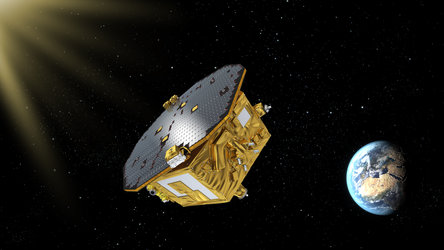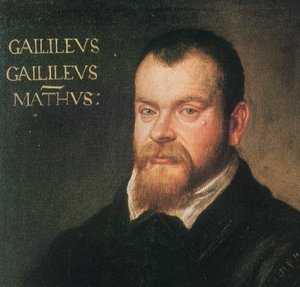Gravitational waves: ‘dents’ in spacetime
Gravitational waves are fundamentally different from, for example, electromagnetic waves. The acceleration of electric charges creates electromagnetic waves, propagating in space and time. However, gravitational waves, created by the acceleration of mass, are waves of the spacetime ‘fabric’ itself.
According to Newton’s theory of gravity, the gravitational interaction between two bodies is instantaneous. However, Einstein’s Special Relativity says nothing can travel faster than the speed of light. If an object changes shape as a result of a mass pulling on it, the resulting change in the force field would spread outwards at the speed of light.
In 1805, Laplace said that if gravity propagates with finite speed, the force in a binary star system should not point along the line connecting the stars, and the angular momentum of the system must slowly decrease with time.
Proof of gravity waves found
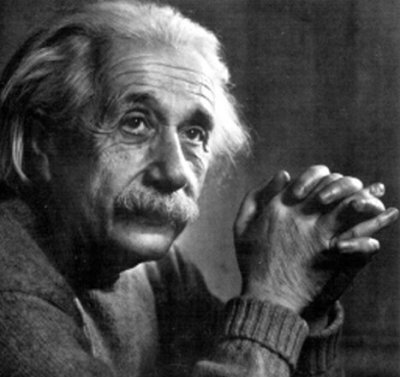
Today’s scientists would say that binary stars lose energy and angular momentum by emitting ‘gravitational waves’. In the late 1970s, indirect proof was found for the existence of gravitational waves by observing the binary pulsar PSR 1913+16. The first direct detection of gravitational waves, emitted by a pair of coalescing black holes, was obtained with the advanced Laser Interferometer Gravitational-Wave Observatory in 2015, and the discovery was announced on 11 February 2016.
Forty years after Einstein’s work on gravitational waves, relativity theorists like H. Bondi proved that gravitational radiation was physically observable, that gravitational waves carry energy, and that a system emitting gravitational waves should lose energy.
General Relativity implies accepting that space and time do not have an independent existence, but rather are in intense interaction with the physical world. Massive objects produce ‘dents’ in the fabric of spacetime. Other objects move in this curved spacetime taking the shortest path, like billiard balls on a springy surface. So spacetime is an ‘elastic medium’.
Elastic but stiff!
If an object changes shape asymmetrically, the spacetime ‘dents’ travel outwards like ripples in spacetime called ‘gravitational waves’. Gravitational effects that are spherically symmetric will not produce gravitational radiation. A perfectly symmetrical collapse of a supernova will produce no waves, but a non-spherical one will emit gravitational radiation. A binary system will always radiate.
Gravitational waves distort spacetime: they change the distances between large, free objects. A gravitational wave passing through the Solar System creates a time-varying strain in space that periodically changes the distances between all bodies in the Solar System (this strain changes distances perpendicularly to the direction in which the wave moves).
However, the relative change in length due to the passage of a gravitational wave is extremely small. For example, in the case of a typical white dwarf binary at a typical distance of 160 light-years, it is only 10–10 m. Measuring distances this small between objects far apart presents a challenge.
Although a supernova in a distant galaxy would bathe Earth with gravitational radiation as strong as several kilowatts per square metre, the resulting length changes will always be very small. Spacetime is an elastic medium that remains stubbornly stiff.
Galactic binaries and massive black holes
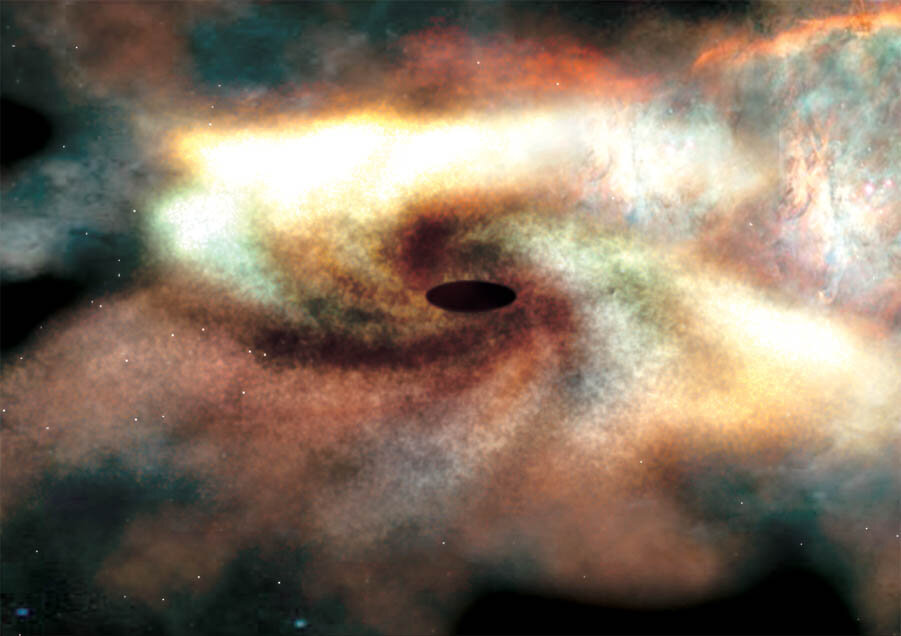
As far as a LISA-like mission is concerned, gravitational waves arise from two main sources: galactic binaries and the massive black holes (MBHs) which are expected to exist in the centres of most galaxies.
Observing binaries is limited to our Galaxy. LISA-like missions will be able to detect several types of galactic sources. Some galactic binaries are so well studied, especially the X-ray binary 4U1820-30, that it is one of the most reliable sources.
If a LISA-like mission does not detect the gravitational waves from known binaries with the intensity and polarisation predicted by General Relativity, it would shake the very foundations of gravitational physics.
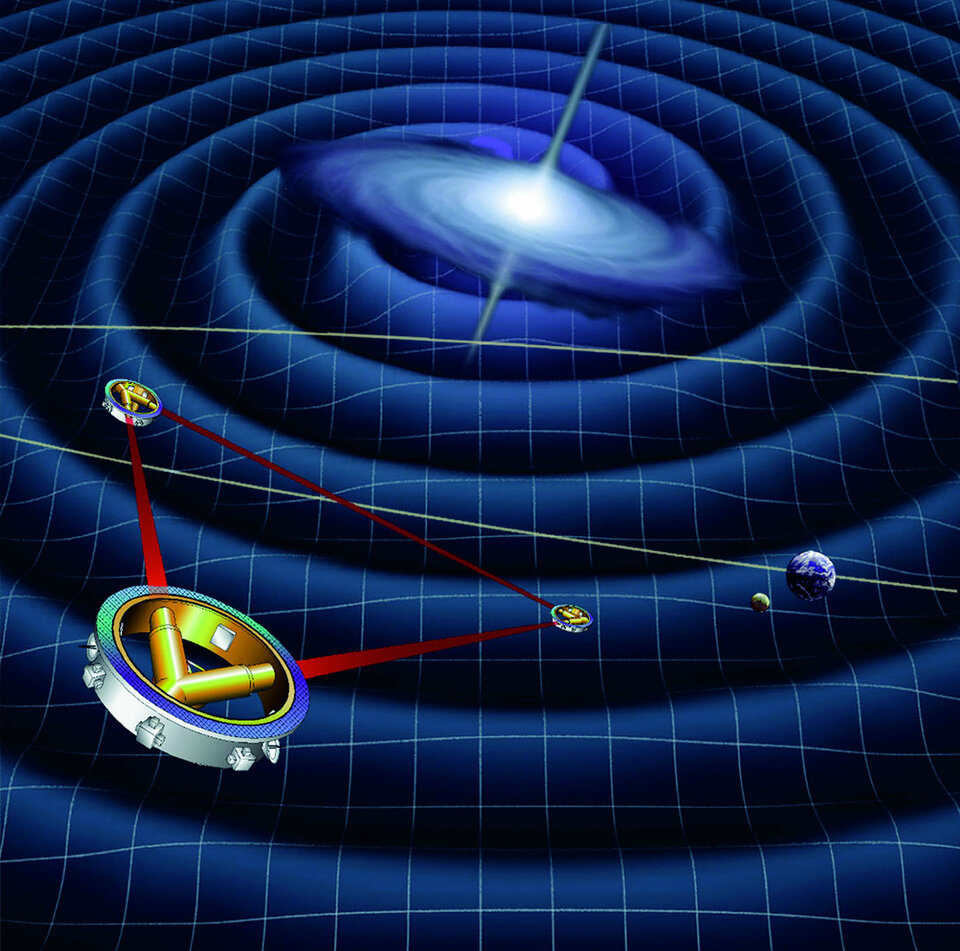
Learning about the formation, growth, space density and surroundings of MBHs is also very important. Scientists suspect that there are MBHs with masses of one million to 100 million times the mass of our Sun in the centres of most galaxies, including our own. Observations of signals from merging MBHs in distant galaxies would test General Relativity, and particularly black-hole theory, to unprecedented accuracy.















 Germany
Germany
 Austria
Austria
 Belgium
Belgium
 Denmark
Denmark
 Spain
Spain
 Estonia
Estonia
 Finland
Finland
 France
France
 Greece
Greece
 Hungary
Hungary
 Ireland
Ireland
 Italy
Italy
 Luxembourg
Luxembourg
 Norway
Norway
 The Netherlands
The Netherlands
 Poland
Poland
 Portugal
Portugal
 Czechia
Czechia
 Romania
Romania
 United Kingdom
United Kingdom
 Slovenia
Slovenia
 Sweden
Sweden
 Switzerland
Switzerland

























